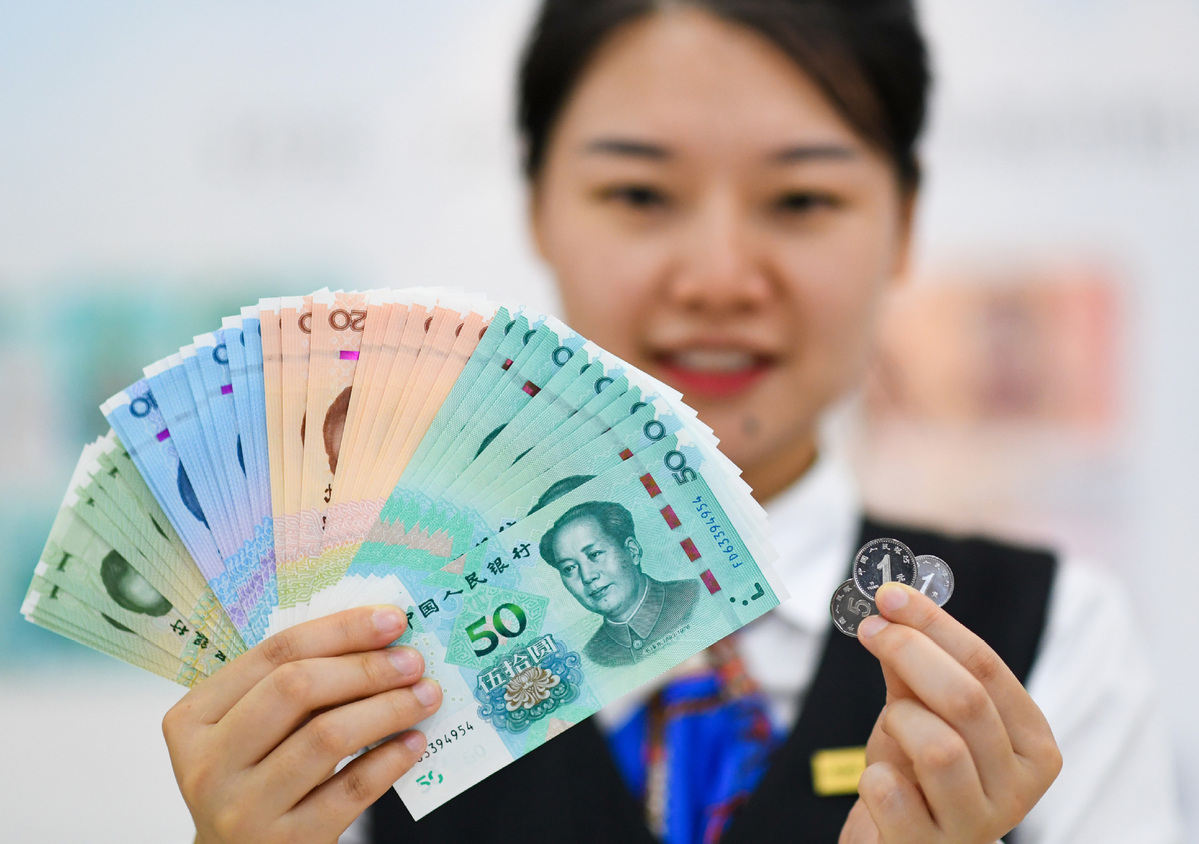Monetary policy easing, fiscal moves turning proactive


China's top leadership sent a clear signal during the annual Central Economic Work Conference indicating that a new round of growth stabilization policies is coming. Monetary policy is easing and fiscal policy is turning proactive, supporting a soft landing and a virtuous cycle of "new infrastructure", new energy and technological innovation while correcting one-size-fits-all practices.
The overall trend for China is to cut profits in the real estate, financial, education and the internet sectors, reallocate financial resources to support the real economy and vigorously develop the manufacturing sector, hard-core technologies, new energy, new infrastructure and capital markets.
Economic work next year should prioritize stability while continuing to pursue progress, according to the conference held in Beijing earlier this month.
Action should be taken to safeguard macroeconomic stability and keep major economic indicators within an appropriate range.
Looking ahead, China's growth momentum will switch from exports to domestic consumption recovery, construction of new infrastructure and a soft landing of the real estate market next year. Stabilizing growth is the key word of the nation's macroeconomic policies. Increasing valuations, stabilizing growth and the building of new infrastructure are major opportunities in capital markets.
Industry segments that benefit from easing monetary policy, stabilization policy and booming new infrastructure will outperform the market.
According to the Central Economic Work Conference, prudent monetary policy should be flexible and appropriate, and liquidity should be maintained at a reasonable and ample level.
The meeting underlined efforts to guide financial institutions to ramp up support for the real economy, especially for small and micro enterprises, technological innovation and green development. Fiscal policy and monetary policy must be coordinated and linked. Cross-cyclical and countercyclical macro-control policies must be organically combined.
The People's Bank of China, the central bank, cut the reserve requirement ratio for banks by 50 basis points effective Dec 15, signifying the trend of monetary easing to support a new round of stabilization of growth.
As the economy is facing downward pressure and as risks associated with the real estate sector have been clearly exposed, China is ramping up efforts to hedge against downward pressure, achieve a soft landing of the housing sector and support the real economy, small and medium-sized enterprises, technological innovation, green economy and new infrastructure to realize cross-cyclical adjustments and high-quality development.
China and the United States will run at different paces in terms of economic cycles and monetary policies. In this round, the Chinese economy has recovered earlier than the US economy, and China's monetary policy has become normalized earlier. As a result, the nation began to see an economic slowdown again earlier than the US.
The US Federal Reserve's tightening of monetary policy will affect China through channels like foreign exchange rates and capital flows, but the fundamentals of China's economy will remain resilient and overall risks in the nation will remain manageable.
During the meeting, Chinese leaders said a proactive fiscal policy must improve efficiency and pay more attention to precision and sustainability. It is necessary to ensure the intensity of fiscal expenditures and speed up the progress of expenditures. In addition, it is important to implement new tax and fee reduction policies, strengthen support for micro, small and medium-sized enterprises, self-employed businesses, the manufacturing sector and risk mitigation, as well as take a moderately proactive approach to advancing infrastructure investment.
The nation's fiscal policy will emphasize efficiency, which means credit easing should match new drivers of economic growth and emphasize the upgrading of the industrial structure and the development of digital economy, new energy and new infrastructure.
China has accelerated the issuance of special-purpose local government bonds since the fourth quarter. Fiscal policy efforts should be appropriately advanced to enhance the role of infrastructure in stabilizing growth by putting equal emphasis on quality and quantity.
It is estimated that special-purpose local government bonds will be issued ahead of schedule from the end of this year to 2022. Total social financing will also hopefully stabilize and rebound in the fourth quarter and the first quarter of next year.
China's economic work should prioritize stability and seek progress while maintaining stability next year, said Han Wenxiu, an official with the Central Committee for Financial and Economic Affairs. All sides should actively introduce policies that can help stabilize the economy and be cautious in rolling out measures that could have a contractionary effect, Han said.
The country must strengthen policy coordination to prevent attending to one thing and losing sight of others. The system promoting economic and social development is interrelated and complicated. Therefore, it is important to avoid negative effects brought by policies that don't necessarily address all sectors.
It was decided at the meeting that China will implement a strategy of expanding domestic demand and boosting internal development drivers. The country will secure jobs and people's livelihoods, expand the middle-income group and stimulate consumption vitality.
Development of the high-tech sector accelerated significantly in recent years. The growth of investment in the high-tech manufacturing sector increased 23.5 percent year-on-year in the first 10 months, 17.4 percentage points faster than fixed asset investment. However, the high-tech sector only took up a small portion of the economy. Last year, the high-tech manufacturing sector contributed 15.1 percent of value-added of the industrial enterprises above a designated size.
Contrary to the high-tech sector, conventional industries, which make up a larger part of the economy, are seeing a slowdown in growth and overall growth of investment in them.
During the period of transition, China needs and has the ability to achieve reasonable economic growth. It is necessary for the country to avoid a one-size-fits-all approach and promote industrial structural adjustment based on a reasonable growth rate.
New infrastructure, a major starting point for the implementation of cross-cyclical adjustment, is conducive in stabilizing growth and employment in the short run and fostering new economy and emerging industries in the long run. China will strive for the development of new infrastructure, including 5G, artificial intelligence and the industrial internet, on the basis of shoring up weak links in railway, highway and bridge construction.
We believe the key to the dual-circulation development pattern is to enlarge domestic demand, enhance the reliability of industrial chains, make breakthroughs in core technologies and step up efforts in new infrastructure construction.
China should effectively implement industrial policy by focusing mainly on supporting basic research rather than particular companies, and forming R&D alliances to overcome technological difficulties.
It is also important for the country to accelerate the reform of scientific and educational institutions, build a market-oriented and multilayered industry-university-research collaboration system, increase incomes of researchers and teachers, and strengthen efforts to attract high-end talent from overseas.
The meeting also stressed that to achieve the goal of common prosperity, the Chinese people must first make the "cake" bigger and better through the common endeavor of the whole nation, and then cut and divide the "cake" well through reasonable institutional arrangements. This is a long-term process, and people should move steadily toward this goal.
Moreover, China should promote high-quality development to strengthen the orientation that prioritizes employment and improve economic growth's contribution to empowering employment. The nation will solve the employment problems of college graduates and other young people, and improve labor and social security policies on flexible employment, according to the meeting.
The writer is chief economist at Soochow Securities Co Ltd.
The views don't necessarily reflect those of China Daily.




































